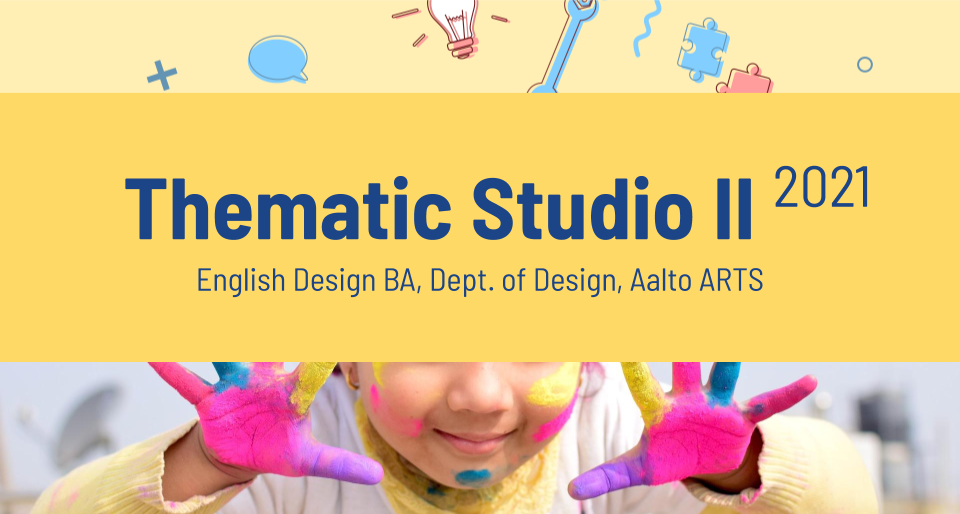
Please note! Course description is confirmed for two academic years, which means that in general, e.g. Learning outcomes, assessment methods and key content stays unchanged. However, via course syllabus, it is possible to specify or change the course execution in each realization of the course, such as how the contact sessions are organized, assessment methods weighted or materials used.
LEARNING OUTCOMES
Students who successfully complete this course should be able to:
- use artistic, scientific and research methods to set goals and directions for their design work.
- position users and their interests within broader communities of people and societal systems.
- use design methods and tools to explore relationships and flows in design work
- turn ideas into coherent presentations of concepts and prototypes
- Work in a group setting towards shared design goals.
Credits: 12
Schedule: 12.01.2021 - 16.04.2021
Teacher in charge (valid 01.08.2020-31.07.2022): Antti Hietaniemi, Markku Reunanen
Teacher in charge (applies in this implementation): Antti Hietaniemi, Markku Reunanen
Contact information for the course (valid 11.12.2020-21.12.2112):
Antti Hietaniemi, antti.hietaniemi@aalto.fi
Markku Reunanen, markku.reunanen@aalto.fi
CEFR level (applies in this implementation):
Language of instruction and studies (valid 01.08.2020-31.07.2022):
Teaching language: English
Languages of study attainment: English
CONTENT, ASSESSMENT AND WORKLOAD
Content
Valid 01.08.2020-31.07.2022:
In this studio course, students explore contemporary phenomena through thematically-framed design projects. The course is organized in tandem with Thematic Studio I with the same theme(s) being explored by students in the two courses. In smaller groups, students work collaboratively in articulating design challenges in relation to the yearly theme and in devising solutions to real-world problems. Building on what the students have learnt in Thematic Studio I, the course supports students in acquiring knowledge and skills to organize design work as a group and in taking a system-view when designing. Students learn systematic ways of finding and utilizing users- and systems-related data, creating concepts and, finally, turning the concept into an early prototype that can be tested with users.
The contact teaching in the course is organized around a combination of assignments, lectures, tutoring and workshops. The typical format of a week includes an introductory lecture with examples and small hands-on exercises, followed by independent group work, documented in a report and supported by tutoring, and finally presenting the results to others.
Assessment Methods and Criteria
Valid 01.08.2020-31.07.2022:
To pass the course, students need to complete the given group assignments, actively participate in class, create a concept and an early prototype, and document their progress in a report. Grades will be based on the successful completion of the steps, the quality of the report and the design outcome.
Workload
Valid 01.08.2020-31.07.2022:
The total workload for the course amounts to 324 hours, consisting of 100 hours of lectures, hands-on exercises and presentations in class, 20 hours of tutoring and 200 hours of independent group work.
DETAILS
Study Material
Valid 01.08.2020-31.07.2022:
Readings as provided in class
Prerequisites
Valid 01.08.2020-31.07.2022:
Students need to have completed ARTX-C1003 Thematic Studio I prior to taking the course.
